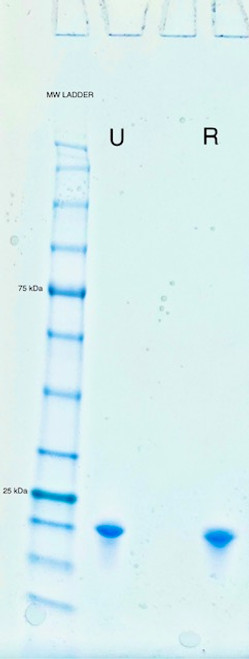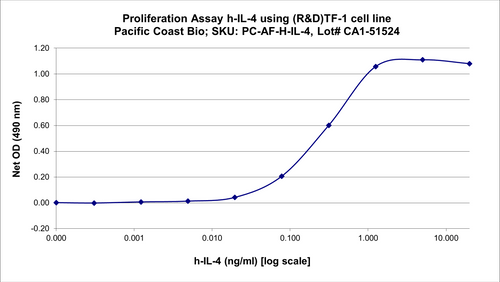IL-3 acts as a crucial hematopoietic growth factor, supporting the survival, differentiation, and proliferation of specialized progenitor cells spanning various lineages such as megakaryocytes, granulocyte-macrophages, erythrocytes, eosinophils, basophils, and mast cells. It is produced by T cells, mast cells, and eosinophils, contributing significantly to processes like thrombopoiesis, phagocytosis, and antibody-mediated cellular cytotoxicity. IL-3 also triggers monocyte activation, suggesting potential additional roles in immunoregulation. Many of its effects hinge on co-stimulation with other cytokines. Notably, IL-3 shows species-specific variability in glycosylation patterns. The recombinant Human IL-3 is a 15.0 kDa globular protein comprising 133 amino acid residues.
|
Product Specifications
|
|
| Species | Human |
| Published species |
Human, Mouse
|
| Expression System | E. coli |
| Amino acid sequence |
APMTQTTSLK TSWVNCSNMI DEIITHLKQP PLPLLDFNNL NGEDQDILME NNLRRPNLEA FNRAVKSLQN ASAIESILKN LLPCLPLATA APTRHPIHIK DGDWNEFRRK LTFYLKTLEN AQAQQTTLSL AIF
|
| Molecular weight | 15 kDa |
| Class | Recombinant |
| Type | Protein |
| Purity |
≥ 98% by SDS-PAGE gel and HPLC analyses.
|
| Endotoxin concentration | <0.1 EU/µg |
| Activity |
The ED50 was determined by the dose-dependent stimulation of the proliferation of human TF-1 cells is ≤ 0.1 ng/ml, corresponding to a specific activity of ≥ 1 x 10^7 units/mg.
|
| Conjugate | Unconjugated |
| Form | Lyophilized |
| Contains |
no preservative
|
| Storage conditions | -20°C |
CAUTION
For Research Use Only. Not for use in diagnostic procedures.





















